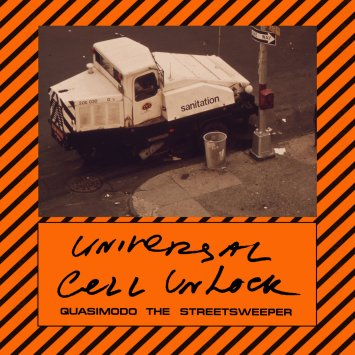 “Many people would avoid being saddled with the responsibility of ringing church bells, they don’t want to become a clock. Many people would avoid cleaning the streets, they want to do things, not undo them. So the ecstasy of ringing the bells and cleaning the streets remains a mystery.”
“Many people would avoid being saddled with the responsibility of ringing church bells, they don’t want to become a clock. Many people would avoid cleaning the streets, they want to do things, not undo them. So the ecstasy of ringing the bells and cleaning the streets remains a mystery.”
Kites’ Royal Paint… was the first proper noise record I heard, and looking back it’s easy to see what it was about it that resonated with me so deeply: the passion put into it. Chris Forgues is well known for his consistent excellence and devotion to the craft throughout numerous aliases and collaborations over the past few decades; not a single release his name is attached to is half-assed. I initially encountered Universal Cell Unlock through the lovely Level Repulsion tape on Mid-Day Massage Parlor back in 2021, but I couldn’t have known the project would continue to improve and eventually reach its full potential three years later with this LP from Psychic Sounds. Quasimodo the Streetsweeper is a sublime work of true sound art, an expression of appreciation for both raw sonic texture itself and the process of observing/producing/harnessing it. To record the material collected here, Forgues hand-built tabletop circuit systems of small kinetic devices that gently strike various metallic objects, the majority of which are “street sweeper bristles which [he] collected from the street, cleaned, and sometimes cut to tune.” The two side-long suites are captivating and meditative in their homespun minimalism, passive and active at the same time as they cycle through without ever truly repeating themselves. Though the style itself brings to mind that of some favorite contemporaries (Nakajima, Althoff, Umeda, Hamel), Quasimodo sets itself apart not just with a singularity of approach but also of concept: it is also an homage to the people, real and fictional, who have made an art form of the trades others dismiss as tedious, inessential, or even pointless. The othering of the titular character, invoked via a still from the 1923 silent film adaptation on the LP’s back cover, serves as a unifying element for this subtle but meaningful aesthetic undercurrent. Also on the back, though, is a photo of “one of the first CD4029A counter ICs manufactured by RCA. The logic chips [Forgues] used to control the percussive actuations on this record are in this family of chips.” Simplicity belying complexity, complexity belying simplicity… this is a wonderful work.
